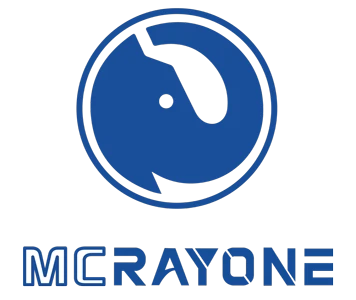Quality Characteristics and Application Scenarios of Palm Oil in Different Stages
Quality Characteristic
The main ingredient of palm oil is triglycerides, which also contains small or trace amounts of non-triglyceride components. It is the chemical composition of palm oil that determines the physical and chemical properties, use and nutritional value of palm oil.
Palm oil is based on triglyceride, which also contains large amounts of glycerol compounds and small amounts of non-triglycerides and triglycerides. These substances are all brought in during the production process. The physicochemical properties of palm oil mainly depend on the degree of unsaturation at the length of the fatty acid chain. Palm oil has saturated and unsaturated fatty acids of about 50% of saturated fatty acids each, which determines the iodine price of the complete palm oil (about 53), and gives palm oil better oxidative stability than other vegetable oils. The complex triglyceride composition of palm oil determines its complex physical properties: different solid fat content at different temperatures, and natural palm oil is semi-solid at room temperature.

Palm oil contains fewer minor components, mainly carotenoids (about 500-700PPM), vitamin E (600-1000PPM), sterols, phospholipids, triterpene alcohols, etc. Although the above ingredients account for less than 1% of the total, they have a great effect on the nutritional value and stability of palm oil. Carotenoids, vitamin E and triene tocopherol all have the effect of first oil and oxidation to protect the oil. With the presence of 50% saturated acid, palm oil has better oxidative stability than other oils.
In the case of sterols, palm oil contains much less cholesterol than many other vegetable oils.
Crude Oil Cholesterol Content Unit:mg/kg
Name | Average Value | Regular Range | Name | Average Value | Regular Range |
COCONUT OIL | 14 | 5--24 | SUNFLOWER OIL | 17 | 8--44 |
COCO BUTTER | 59 | ---- | SOYBEAN OIL | 28 | 20--35 |
PALM KERNEL OIL | 17 | 9--40 | MUSTARD OIL | 49 | 25--80 |
PALM OIL | 18 | 13--19 | CORN GERM OIL | 50 | 18--95 |
Palm Oil Products Sterol Composition Unit:mg/kg
Species | Cholesterol | Campesterol | Stigmasterol | Sitosterol | Unknown Sterol |
CRUDE PALM OIL | 7--16 | 90--151 | 44--66 | 218--370 | 2--18 |
Degumming and decolorizing oil | 5--10 | 49--116 | 22--51 | 113--286 | microscale--8 |
Degummed, decolorized and deodorized oil | 1--5 | 15--16 | 8--30 | 45--167 | microscale |
Palm Soft Gum Oil | 2 | 26--30 | 12--23 | 68--114 | ---- |
It can be seen that the cholesterol content in the refined palm oil and palm soft fat is significantly reduced, and it contains carotenoids, vitamin E and triene tocopherol with anticoagulant and anti-cancer effects, making the palm oil have a good nutritional value.
Application Scenarios
Ninety percent of palm oil and palm oil products are edible for the purpose, and are widely used in diet, food manufacturing and processing worldwide, and the other 10 percent of palm oil is mainly used in the production of soap and oil chemical products.

1.Shortening
At 20C, palm oil contains 22-25% solid fat, which is an important component of the shortening formula, and different foods require different shortening. Many shortening formulations are mixed with other vegetable oil based on palm oil, in order to change its own subtle functional characteristics, adapt to the processing of all kinds of food with different colors, aroma and taste, and become a food with different flavor and taste. For example, the mixture of palm oil and low mustard vegetable oil is the most economical and effective oil to produce cakes, while the oil suitable for ice cream fillers and baked foods is ester exchange palm soft butter.

2.Margarine
Margarine (wheat cream) is an emulsion composed of water and oil, named after the original development of artificial cream. There are quite a few product lines: cream for bottled meals (cream for block meals), cream for daub (cake), cream for tropical climates, muffin cream, etc. Palm oil soft fat is suitable for the production of liquid wheat cream, while palm stearand hardened palm oil are suitable for the production of solid wheat cream.
3.HPO
Hydrogenated palm oil or plant casefat is a major commodity in countries such as India, Pakistan, Egypt, Saudi Arabia, Iraq and Iran. In India and Pakistan, consumers like granular products, while in Iran and Iraq, people like smooth texture products.

4.Fried Oil
Palm oil is the most widely used as frying oil, because it has a good smell, good antioxidant resistance, not easy to polymer with acid and high nutritional performance (containing 50% unsaturated fatty acids, without trans acid).
Author | Nationality | Conclusion |
Von Zeddelman& Wurziger | Germany | hardened peanut oil and palm oil products are the best |
Fanr | France | palm fat and palm oil is best for the restaurant industry |
Toregard& Eriksson | Switzerland | palm soft fat and palm oil are better than hydrogenated soybean oil |
Herendi & Bethke | Germany | palm soft fat and peanut oil |







